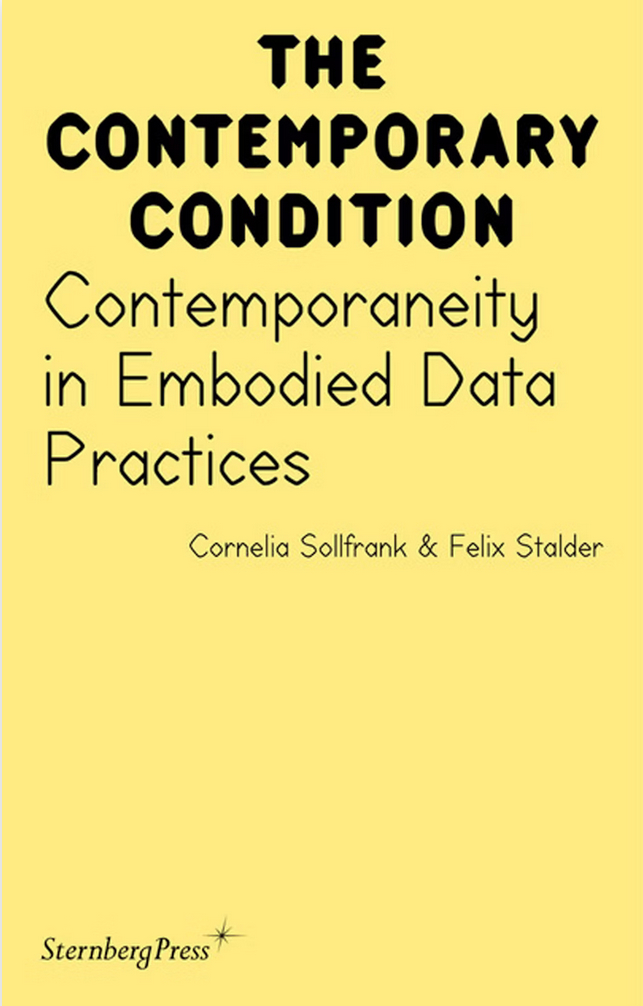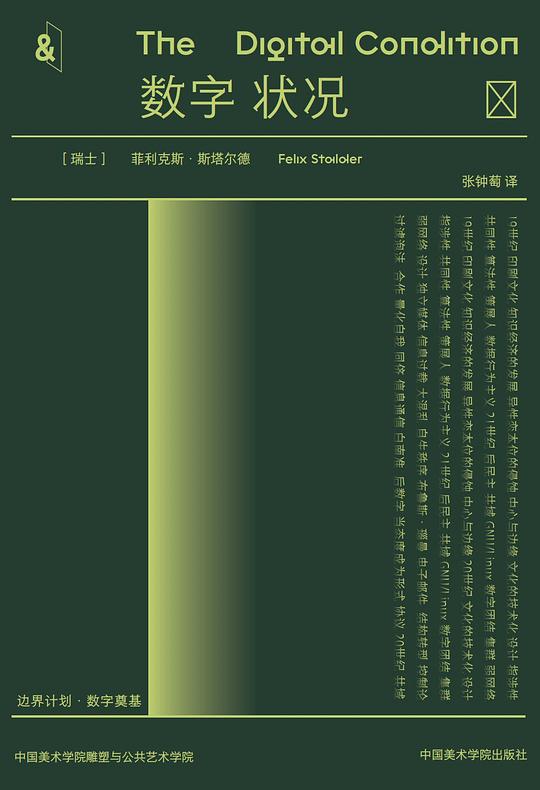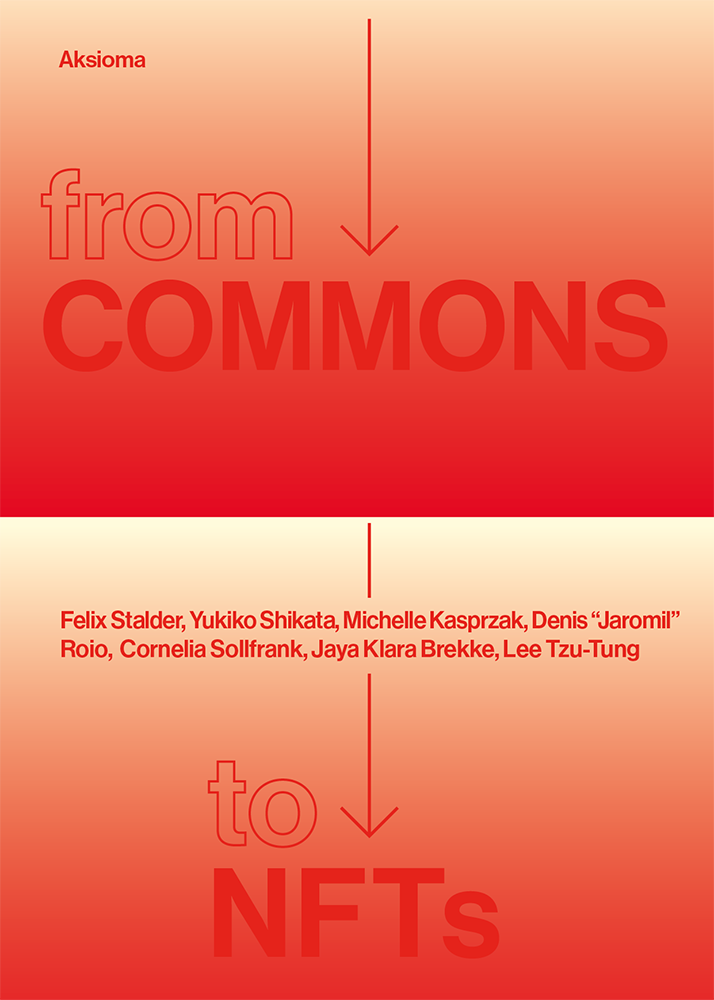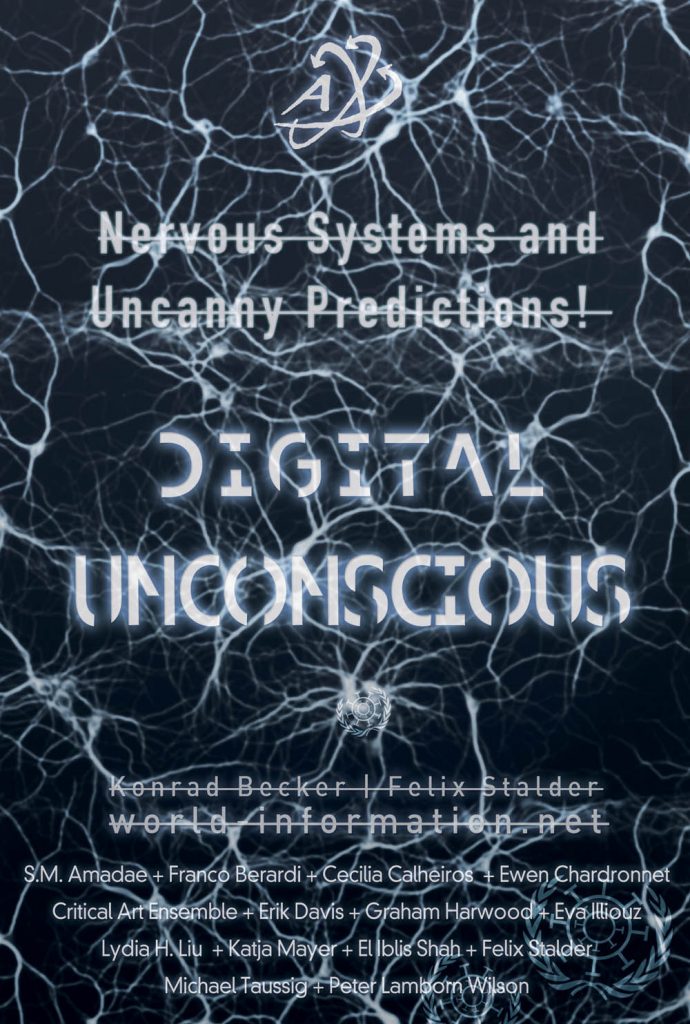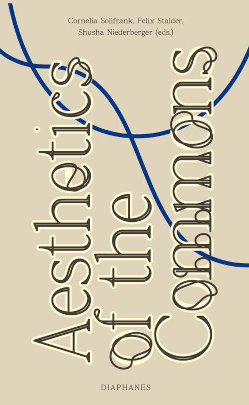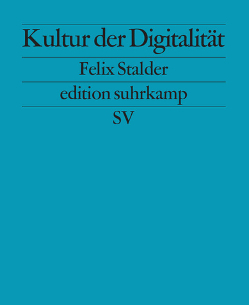
Jordan Crandall posted a very interesting essay to nettime, focussing on the subjectivity of a culture of "assemblage", or as I would call it, a culture of remixing. The most interesting parts are bolded by me.
Absorption and Exposure
a working assemblage of assemblage theory
Jordan CrandallI am interested in a certain sense of wanting to be "in" something: to participate in it, to connect with it, to synchronize with it, to be caught up with it, rather than to visually possess it. The desire to be attuned to something that is happening, or that might happen at any moment -- not necessarily as a conscious thought, but as a vaguely felt expectation. The desire to move toward something that is (or might be) happening, in order to absorb its force, touch it, taste it, surrender to it -- rather than simply to observe it.
For Bataille, this would be the erotic pull of death. I am thinking about it as a dynamic of immersion and implication that involves media-technological actors and which reorients questions of subjectivity and spectatorship. Or, in other words: an ecology of absorption and exposure. Since it involves the sensorium and the transmission of resonances, it is not something that can be understood in terms of visual mastery or language. It does not privilege reading but readiness. Rather than being about possessing something from a distance, it is about a surrender to it -- an extreme intimacy, a merging. One does not look from afar, fortifying the self, but rather enters into the fray, exposing the self.
Is this drive to be "in" something more constitutive than the drive for separation (difference)? The drive for immersion or self-exposure more constitutive than that of voyeuristic detachment? If so, how does this challenge the dominance of a foundational condition of spectatorship, or the understanding of media in terms of its capacity to produce a spectatorial relation? To approach the matter, one must undress, slowly, undoing the customary divisions we make of the world -- between observer/observed, inside/outside, signifier/signified, and even nature/culture. One must not rely on words so much as the intangibilities of resonance -- mood, movement, sensual contact. One must not negate but affirm, conveying permissions through expressions that can show more than say.
A strategy of approach can be found in the concept of the "assemblage," as outlined by Manuel DeLanda, who has brilliantly expanded Deleuze's original work. Using DeLanda's formulation as a basis of departure, I have developed one line of thinking about assemblage theory, not as a general ontology, but as an absorption/exposure ecology. I have incorporated other references -- for example Brian Massumi's theories of affect; the actor-network orientations of Vilem Flusser, Matthew Fuller, and Bruno Latour; Lacan's notion of the "sinthome" by way of Zizek; Keller Easterling's concept of "spatial formulas" -- and I have developed the assemblage's erotics, understanding it as a mechanism of desire. For me the assemblage is a vehicle of obscene enjoyment, conveying both routine and change, enticement and anguish. An undulating lustful thing, dripping. And so, rather than adhering to an orthodoxy, I am treating the theory itself as a kind of assemblage. What has emerged here is simply one assemblage of assemblage theory.
As an ecology of absorption and exposure, the assemblage is, again, an event-in-formation -- a "something" happening or that might happen. It is a forming-event-thing that we want to be part of, attune to, surrender to -- not necessarily consciously, but as a felt expectation. An event-in-formation that, in combining the reassurance of the familiar with the thrill of the potential, works through both stabilization and destabilization, routinization and tendency, prohibition and enticement. An event-in-formation that
cannot be relied upon to resolve to a specific outcome, but rather, to continually engender a set of possibilities -- or in other words, to exert tendencies. A mechanism of desire for immersion and exposure
within this forming-event.--
At its basis, the assemblage is a moving population of symbiotic,co-functioning actors. These actors can be anything: any kind ofbody or entity, whether organic or inorganic, at any scale, fromthe sub-personal to the social community. Actors participate inmultiple assemblages at the same time, and they may perform differentfunctions at different times, or at the same time, even within thesame assemblage.
Here, I wonder, if there is not a bit of functionalism (Latour has this problem as well), where things always work together. Sure they do, but never perfectly, there is always some friction, which, when it becomes too strong, things fall apart.
These actors synthesize (or network together) through shared,recurrent processes of stabilization and destabilization. Theseprocesses involve circuits of commonality and difference, attunementand distraction, connection and disconnection, extension andreduction. Through these processes, the assemblage, as a population,is continually modulated, actively re-consolidating itself and itsidentity (which could be a subjective identity). It does so throughthe increase or decrease of its internal consistency or the degree ofits boundary-delineation, moving above or below various thresholds ofstabilization.We can define these recurrent processes as follows. The first involvesa dynamic of resonance and dissonance. This is a form of affectivetransmission and bonding, playing out across intensive and extensiverealms -- a charge that passes through actors, connecting, conducting,and synchronizing them. It is not reducible to language and knowledge,but involves a form of corporeal knowingness. For example, resonancecan allow a certain move or gesture to propagate across a community,gaining strength and adhering in a dance form. A critical mass ofaffective transmissions begins, over time, to bond a community and setthe stage for a shared practice. Dissonance can involve a breakingof the beat, a turning. The second involves a dynamic of coding anddecoding. This involves the mobilization of linguistic resourcesand forms of scripting -- such as in narratives, imaginaries,programs, and constitutions. Decoding can be a mechanism of productive"unlearning," allowing one to break with older patterns of thoughtthrough the introduction of other routines, procedures, rituals, oreven through games, gaffes, and humorous anecdotes. In this way itguides change. Coding can involve genetics, and decoding, a kind ofgenetic unlearning -- as in the way that erotic activity decodesgenetic influences. The third involves a dynamic of formulation anddeformulation. It allows the assemblage to variably replicate throughthe abstraction and transduction of forces into new reproductionmachineries; through deliberate template mechanisms; or throughemergent forms of social influence and obligation. For example, amegastore formula allows exact replicas to be built anywhere, or anorganization opens a new branch and transmits its guidelines to newemployees. Or, a video clip goes viral.
These three processes work in conjunction with one another. Forexample, one can follow Niklaus Largier's elaboration of thehistory of flagellation as a repeated, ritualistic practice ofaffective-imaginary arousal, which reinforces a community and anindividual body within it as it simultaneously deterritorializesthe body -- all through a specific symbolic enaction that has beenformulated, replicated as a religious practice. Or there can be adrift from one process to another, as when a group coheres throughidentity practices, but then allows itself to be galvanized byaffective charges, only to code itself again. These three processesserve to stabilize or destabilize the assemblage as a whole:stabilizing, in generating a coherency, a concentration, a platformof use; destabilizing, in allowing flexibility, decentralization, theopening up of new patterns of use, allowing actors the ability toenter into new assemblages. From the point of a subjectivity: a habitand a flight of fancy; a routine and an escape route; to find oneselfand to lose oneself; comfort and change; attention and distraction;eroticism and death. What attracts us is precisely this quality ofdual embodiment: the assemblage as both routinization and potential. Arestlessness, which can make one (feel) more alive.
These recurrent processes form the environment through which theactors exercise their various capacities to engage with other actors,according to the properties they have been endowed with, and thedispositions that adhere in them. Properties are organizationalprinciples and procedures that can be determined and stated.Capacities are qualities of engagement: to affect (excite) and beaffected; to interact with, transmit intensities with, enter intoalliances with other entities; to influence the timing, movement,and composition of actors and parts. Capacities depend on an actor'sproperties, however unlike properties, capacities are open-ended anddependent upon the properties and capacities of other interactingentities. If properties are about actualities, then capacities areabout potentials. Dispositions are affectively-grounded behavioraltendencies, attitudes, moods, or general temperaments that adhere overtime, existing somewhere between a property and a capacity.
The processes strengthen as they are internalized in practice --through the actors' exercising of their various capacities to engagewith other actors, according to their properties and dispositions.As this occurs, the actors move, are moved, across thresholds oforganizational stability or scale. Forms and behaviors that canbe apprehended may then arise -- space, social conduct, somaticeffect. One can understand these forms and behaviors in terms ofthe translations between levels of organizational stability and thecrossing of materialization-thresholds, which always pass throughpatterns of activity, or acquired patterns of response. These formsand behaviors are, in a sense, actors playing roles.
By taking a role, and actor both expresses something and embodiessomething that can be apprehended -- expresses, as a living presence,and embodies, as a formal presence -- though not in equal measures.For example, in making a call, the mobile phone is an actor embodiedin particular material role, while the finger pressing its buttons isone that is playing an expressive role. Through the taking on of theseroles, the actors are in turn modified, incorporated into variousassemblages, embedded into new arrangements: the capacity of the phoneto allow button-pressing incorporates the action, and through it,the body/subject in whole or part, in the assemblage of the placedcall. But there is no action without the recurrent processes ofstabilization and destabilization -- resonance, coding, formulation-- that motivate it. In the case of the phone call: the transmissionof affects, sequencing and narrative, protocol and uniformity.There is a reciprocity between the processes and the actor-roles.Each constitutes the other. As a result, knowledge-accumulation mayintensify. The assemblage may replicate, encouraging conformity to itsstandards. But it can also generate mutant forms.
The assemblage IS its actors, at any scale, and thus it can, ateach of its scales, be said to have its own particular capacities,properties, and dispositions as a whole. Assemblages interact withone another, exercising their various capacities, and through thisprocess, they can accrue new properties and dispositions. The strengthof the assemblage could be said to derive from the actors that itis able to effect and mobilize, and the degree of functionality oftheir roles. Actors can be, but are not necessarily, functional oroperational. Expressions of the body, in and of themselves, aregenerally not functional. For example, an expression of alarm.However, they can become functional, when they become readable andconveyable within a community, or when they are absorbed into aninstitutional apparatus of one sort or another. They can becomeoperationalized -- able to be directed, harnessed for politicalmaneuverings. For example, the terror alert system, which, byconveying states of alarm, harnesses affects for security purposes andfor political ends.
Again, while properties are actualities, capacities are potentials-- they depend on the properties and capacities of other interactingactors. The assemblage is provisional; it cannot be relied uponto produce any specific outcome. At any scale, the assemblage isalways a world in the making: a collection of compositional energiesand substances that carries forth a potential event, or simply asensation. Rather than producing specific forms or behaviors, theassemblage works by modifying potentials, engendering recurrentmaterials and excitations with possible outcomes. As such, it is alikelihood, a tendency -- a "something" waiting to happen.
This tendency is a kind of directional pull that arises from theproperties, capacities, and dispositions of the actors, at whateverscale (including the entirety of the assemblage itself), as they areenacted in roles. When quantifiable, it can be understood in terms ofprobability or statistical causality. One can predict, but one doesn'tknow what will happen, since nothing occurs in complete isolation.Everything interferes with everything. Small instances can catalyzelarge-scale effects that were not intended. Triggers or catalystsfor effects can come from anywhere. Two different causes can lead toone and the same effect, or one and the same cause may produce verydifferent effects. One cannot say that a particular cause will producea particular effect, but rather that a specific cause may increase theprobability of the occurrence of a given effect.
When we are talking about subjective/social formations -- a"something" into which we insert ourselves, or want to insertourselves -- one must not only look to statistics, but to the waysthat significance is negotiated within a social field. And onemust take desires into account. The properties, capacities, anddispositions of the actors are a complex of many subjective andsomatic factors. When we are affected, we act according to our beliefsor principles for acting. We also act according to our dispositions:our affectively-grounded behavioral tendencies, attitudes, moods, orgeneral temperament. Even if beliefs involve reasons, they do notalways involve meaningfully oriented action, since they can emergefrom intense feelings. On one end of the spectrum would be purelycausal: reactions triggered by habit. On the other end would be thepurely reasoned: actions resulting from deliberate choices. But thereare worlds in between, shot through with the ambiguities of desire.
Again, tendency is a kind of directional pull that arises from theproperties, capacities, and dispositions of the actors, at whateverscale (including the entirety of the assemblage itself), as they areenacted in roles, as enabled by the stabilization and destabilizationprocesses. The assemblage itself accrues a disposition, or acts as adispositional trigger. When we are part of it, we can say that thisdisposition is ours, or partly "mine" -- even as it is modulated,coalescing and breaking up, hardening and loosening.
The assemblage can generate a longing for attunement -- for thesense of being "inside" something, or the sense of already being"in" something (a common attachment, a seamlessness). This longingto belong could be understood as a process of subjectivization;the longing itself, as desire. The assemblage takes root to theextent that it resonates with something deep within the self:not necessarily as a lack that it may fill, but as a potentialexcess. The assemblage is about abundance -- a self that alwayshas the possibility of spilling over its bounds, and which isconstituted in excessive transmissions that do not necessarily rely onlanguage or representation. It is something like a sensorial motif, apropagating energy-pattern that generates excitations and structuresdisposition, yet at its core is meaningless. Here the contradictionsof the assemblage -- in its combination of both stabilizing anddestabilizing processes -- come into full play. It is a vehicle ofobscene enjoyment, in you more than you know. It gives permissions,yet when it passes through culture -- the normative field of thesocial -- it sustains an undercurrent of prohibition. It maintains both enticement and anguish: the anguish of temptation.
This attunement -- this longing for, or sense of, being "in" something -- can happen in various degrees of involvement. It can simplyconsist of an affective charge, a thin zone of contact: a readinessto act, but not necessarily an act. A sense of action, without theaction. One is "in" multiple assemblages at the same time, at variousscales from the sub-personal to the social community. As theseassemblages overlap, one experiences changing, inconsistent modes ofcommonality and difference, attunement and distraction, connection anddisconnection, extension and reduction, whether powerful or light,enduring or fleeting.
If desire is a longing to be "inside" an assemblage, then that whichwe find desirable in others could well be their own embeddednessin assemblages that we want to be "in." The desiring-mechanismworks through the reassurance of ritual and the promise of untoldadventure -- recurrence and potentiality. The dance of stabilizationand destabilization. Desire needs its rituals, but without thecultivation of the unknown, it evaporates. The swirling of recurrentchoreographies; the intimate dance of the courtship ritual. Bodies arerevealed and concealed, dissolved into a configuration of propertiesand capacities, then re-emerged, reassembled, only to realign again --not on a flat plane of consistency, but in terms of strata, layers,degrees of organizational complexity. Yet one could also see it thisway: these bodies are always already complete, it is just that theirmode of apprehension is always partial and mobile.
To be absorbed, to be inside, is also to be exposed -- to be openon all sides. If subjectivity is a modality of perspective frominside the assemblage (an inside looking out), then it is also apoint of accessibility from the outside (an outside looking in).However to be open on all sides is to dissolve perspective and theseer/seen opposition -- as well as the primacy of vision. Thereare no longer any sides to speak of -- only circuits. Exposure, asa surrender, opens vulnerabilities, portals and trajectories forexterior operations, but it also generates a fluidity, elusive andfleeting. It registers a topology more than a body, a "showing" morethan a saying.
A topology that tends toward a "something."





